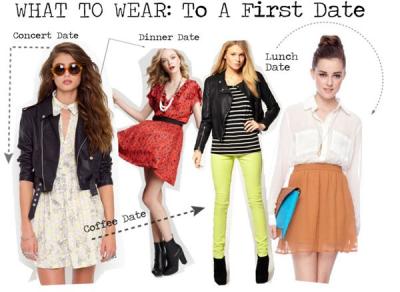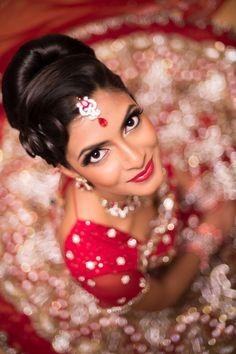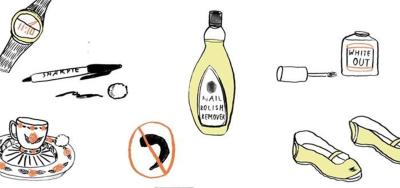Elegant Saree Draping Styles - Traditional & Modern

Table of Contents
- Saree. An Epitome of Grace & Elegance
- Saree Draping - A Form of Art
- Draping Diversity: A Panoramic View of Saree Styles Across India
- Conclusion
- Frequently Asked Questions
Have you ever wondered about the timeless allure of the saree, a garment that transcends fashion trends and embodies the essence of Indian culture? The saree holds a profound significance, symbolising tradition, grace, and femininity. Beyond being a piece of clothing, it's a canvas that enhances the inherent beauty of women. From the intricate weaves to vibrant hues, each saree tells a story. The art of saree draping, with its myriad styles like Nivi, Bengali, and Gujarati, adds a unique charm. Join us in unravelling the beauty and cultural richness woven into the fabric of Indian tradition.
Saree. An Epitome of Grace & Elegance
When we talk about traditional Indian clothing, the saree stands as a symbol of grace and elegance. It has gracefully evolved, embracing various styles and techniques that mirror India's rich cultural diversity. The saree, arguably the most beautiful traditional Indian garment, is not merely a daily attire but a favoured choice for special occasions like weddings, parties, festivals, and events. Regardless of your personal style, India's vast collection of stunning sarees ensures you'll discover one that perfectly aligns with your taste, offering a timeless blend of beauty and cultural richness in every intricately woven thread.
Saree Draping - A Form of Art
Saree draping is a captivating art that transforms the six yards of fabric into a canvas of elegance and grace. It involves intricate folds, pleats, and tucks, creating a mesmerizing drape that accentuates the wearer's silhouette. Each region in India boasts distinct draping styles, reflecting cultural diversity. The art of saree draping is not just about clothing; it's a celebration of tradition, identity, and craftsmanship. From the delicate seedha pallu to the elaborate lehenga style, mastering the art requires skill and appreciation for the timeless beauty inherent in the flowing folds of this iconic Indian attire.
Draping Diversity: A Panoramic View of Saree Styles Across India
India, a land of rich traditions and cultural diversity, boasts a kaleidoscope of saree draping styles. Beyond being a garment, the saree represents the heritage, customs, and identity of each region. Let's embark on a sartorial journey, unveiling the unique draping techniques from different states.
Nivi Style of Andhra Pradesh: The Nivi drape, originating from Andhra Pradesh, is one of the most popular saree draping styles. Characterized by neatly pleated folds and a pallu gracefully flowing over the shoulder, this style adds an aura of sophistication. The Nivi drape is versatile, suitable for both everyday wear and festive occasions.
Bengali Drapes from West Bengal: West Bengal is renowned for its distinctive Bengali saree draping styles. The traditional "Atpoure" and "Shakha-Pola" drapes, adorned during weddings and festivals, feature a prominent red border. The pallu is elegantly draped over the left shoulder and often showcases intricate designs, reflecting the artistic richness of Bengal.
Gujarati Garba Style: In Gujarat, the vibrant Garba dance inspires a unique saree draping style. The "Gujarati" drape involves tightly pleated pallu arranged in the front, highlighting the intricate patterns. This style allows for ease of movement, making it perfect for lively celebrations like Navratri.
Maharashtrian Nauvari Drape: The Nauvari saree draping style hails from Maharashtra and is a symbol of Marathi culture. Characterized by its distinct nine-yard length, the saree is draped like a dhoti, offering both comfort and grace. The Nauvari drape is popularly worn during Maharashtrian folk dances and festivals.
Tamil Nadu's Madisar Style: The Madisar drape is a traditional style from Tamil Nadu, typically worn by married women. This elaborate style involves wrapping the saree around the waist, forming a series of pleats, and then draping it over the left shoulder. The pallu is longer than usual, creating a regal and graceful look.
Kodagu Style from Karnataka: Karnataka's Kodagu style is a unique way of draping the saree, often seen in the Kodava community. The pleats are tucked at the back, allowing the pallu to fall over the left shoulder. This distinctive style is adorned during cultural events and festivals, reflecting the cultural identity of the region.
Assamese Mekhela Chador Drape: Assam's Mekhela Chador drape consists of two pieces – the Mekhela, worn as a skirt, and the Chador, draped over the upper body. The Mekhela is elegantly pleated, and the Chador is intricately pinned, creating a graceful yet comfortable attire.
Kerala's Mundum Neriyathum Drape: In Kerala, the Mundum Neriyathum drape showcases the simplicity and elegance of the traditional attire. The saree is draped in a two-piece style, with the Mundu forming the lower garment and the Neriyathum draped over the blouse. This style is commonly worn during festive occasions and cultural events.
Conclusion
As a cultural ally, Kaya celebrates the diverse draping styles of the saree across India. The threads of tradition and fashion intertwine seamlessly, creating an exquisite tapestry of elegance that resonates with the rich cultural heritage of each state. Explore the beauty of Indian sarees with Kaya and embrace the timeless allure of these traditional ensembles.
Frequently Asked Questions
Q. What are the different types of saree draping styles in India?
A. India boasts diverse draping styles, including the Nivi style from Andhra Pradesh, Bengal's Atpoure and Shakha-Pola drapes, the Gujarati Garba style, Maharashtra's Nauvari drape, Tamil Nadu's Madisar style, Karnataka's Kodagu style, Assam's Mekhela Chador drape, and Kerala's Mundum Neriyathum drape.
Q. How do I choose the right saree drape for an occasion?
A. Consider the occasion and cultural context. For instance, opt for the sophisticated Nivi drape for formal events, the Gujarati Garba style for festivities like Navratri, and the regal Madisar style for cultural celebrations.
Q. Can I experiment with saree draping styles based on my body type?
A. Absolutely! Different draping styles can complement various body types. For instance, the Nivi drape offers a universally flattering silhouette, while the Nauvari drape from Maharashtra suits those looking for a unique and traditional style.
Q. Are there specific accessories that enhance the beauty of different saree draping styles?
A. Yes, accessories play a crucial role. For instance, Bengali drapes are often paired with red and white bangles, while the Kodagu style from Karnataka may include traditional jewellery like Kolusu (anklets) and Petha (headgear).
Q. How does Kaya celebrate the cultural significance of saree draping?
A. Kaya appreciates and celebrates the cultural diversity of India through its diverse saree draping styles. The brand recognizes the significance of each style, aligning with its commitment to timeless beauty and cultural finesse.











